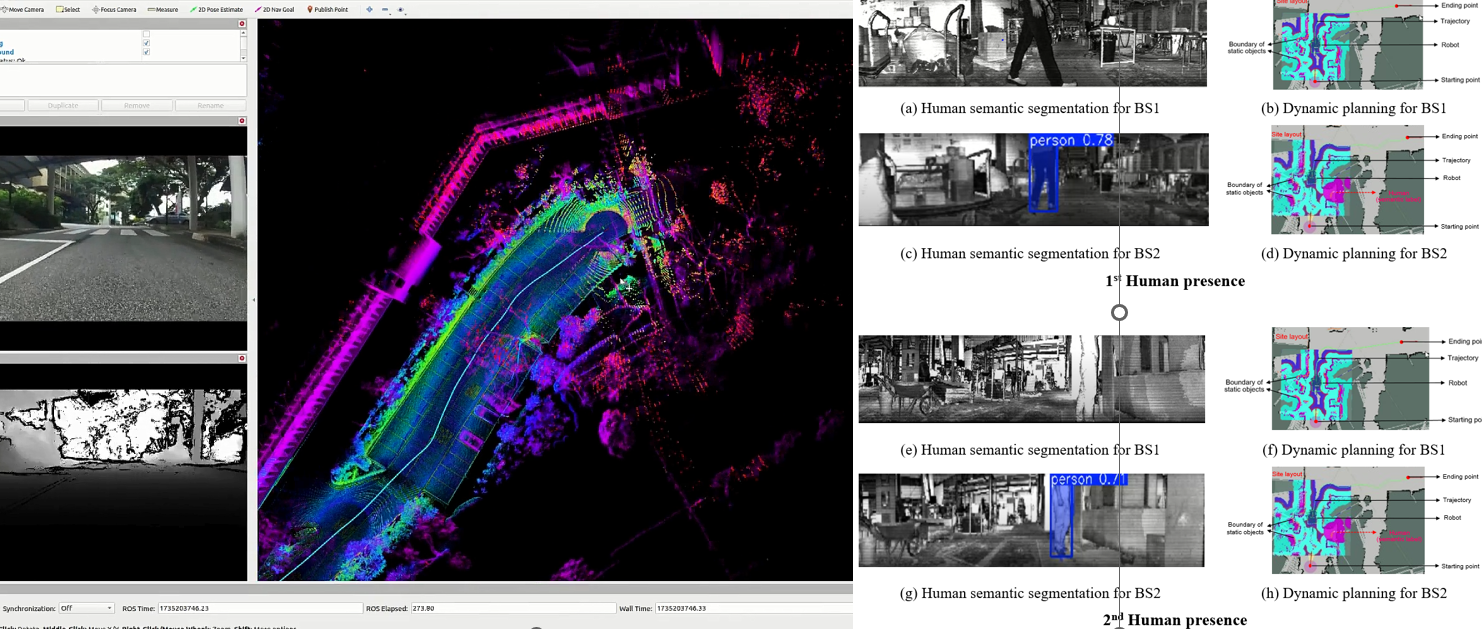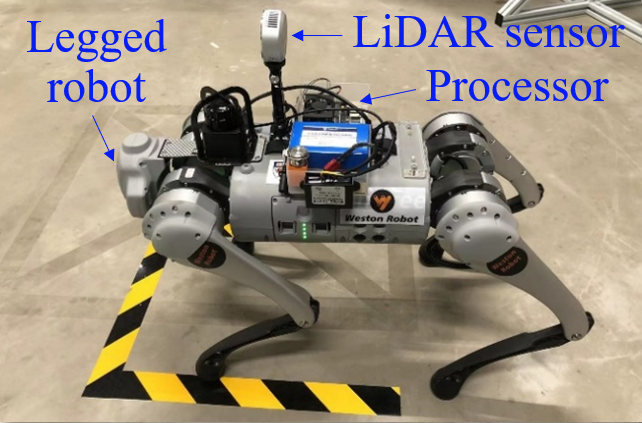Reimaging the built environment with robotics and artificial intelligence
Team Members
RAIS4BE Lab at National University of Singapore pioneers robotic scanning and building information modelling (BIM) technology. Since the Lab started in 2021, we’ve explored LiDAR, image-based sensing, and semantic AI algorithms with mobile robotic platforms for autonomous 3D scanning, followed by high-precision 3D BIM reconstruction and semantic enrichment for legacy buildings or infrastructures. We are also interested in new generative design methods that integrate as-built BIM with AI to produce topologically valid designs for building optimisation. Our lab brings together researchers from Civil, Mechanical, Architecture, Geodesy, Electrical and Computer Engineering.
Qiao Zheng
PhD Researcher
Kexin Li
PhD Researcher
Josh Li
PhD Researcher
Joining
PhD Researcher
Yushuo Wang
MSc (Research)
Runfeng Ma
MSc (Research)
Dian Zhuang
Visiting PhD
Chao Xiang
Visiting PhD
Ruoming Zhai
Visiting PhD
Ben Ben
Lab Mascot
Mike Li
Research Fellow
Vincent Gan
Assistant Professor
Asiri
Research Associate @HKUST
Shaobo Li
Research Associate
Yuanyuan Deng
Research Assistant
Jey Chandar
Research Assistant
Tao Wang
PhD Researcher
Difeng Hu
PhD Researcher
Melanie Tan
PhD Researcher
Xiuqi Li
PhD Researcher
Oh Hui Lin
MSc (Research)
Xiayi Chen
MSc (Research)
Robot Dog & LiDAR Scanning (2022)
Automated 3D Mapping & Semantic Navigation
Trajectory Optimisation & 3D Perception (2024)
Our Research & Teaching
CDE Innovation Day Award
Teaching Excellent Award
Featured Publication
Hu, D.F., Gan, V.J.L.,* • Automation in Construction (2.2025)
Semantic navigation for automated robotic inspection and indoor environment quality monitoring
This paper proposes a semantic navigation approach to improve robotic inspection. A revised RandLA-Net and KNN algorithm construct a semantic map rich in detailed object information. An object instance reasoning algorithm identifies and extracts target object coordinates from the semantic map. A semantics-aware A* algorithm calculates safer, efficient navigation paths.
Gan, V.J.L., Hu, D.F.,* etc. Computer-Aided Civil and Infrastructure Engineering (3.2025)
Automated indoor 3D scene reconstruction with decoupled mapping using quadruped robot and LiDAR sensor
This study introduces an optimization algorithm incorporating viewpoint generation, occlusion detection and culling, and robot-moving trajectory identification. The research investigates 3D reconstruction, comparing coupled and decoupled approaches to identify most practical configuration for robotic scanning.
Gan, V.J.L., Li, K.X.,* etc. • Applied Energy (1.2025)
3D reconstruction of BIM with weakly-supervised learning for carbon emission modelling in the built environment
This paper presents an AI approach that employs weakly-supervised learning for automated BIM reconstruction, aiming at accurate carbon performance evaluation. By employing weakly-supervised semantic segmentation, this approach segments structural components from 3D point clouds and formulates the topological relationships of objects for BIM reconstruction. The BIM is used to assess upfront carbon footprint.
Zhai, R., Zou, J., Gan, V.J.L.,* etc. • Automation in Construction (10.2024)
Semantic enrichment of BIM with IndoorGML for quadruped robot navigation and automated 3D scanning
In this paper, BIM data schema is enriched with IndoorGML, integrating building geometry with spatial data to establish an indoor navigation model describing multi-scale spatial topological networks. This navigation model optimizes robot scanning positions and traversal sequences.
Wang, T., Gan, V.J.L.,* • Automation in Construction (10.2024)
Enhancing 3D reconstruction of textureless indoor scenes with IndoReal multi-view stereo
This paper presents the “IndoReal-MVS” dataset, a rich indoor-centric compilation reflecting real-world phenomena through advanced computer graphics. It introduces unsupervised “IndoorMatchNet”, synergising Feature Pyramid Network (FPN) and Pyramid Flowformer (PFF) for encoding complex indoor geometries.
Hu, D., Gan, V.J.L.,* etc. • Building and Environment (8.2022)
Multi-agent robotic system (MARS) for UAV-UGV path planning and automatic sensory data collection in cluttered environments
This paper presents a multi-agent robotic system for automatic UAV-UGV path planning and indoor navigation to automate sensory data collection. An enhanced shunting short-term memory model is proposed to optimise the pathfinding, 2D image and 3D point cloud data collection.
Gan, V.J.L.,* • Automation in Construction (2.2022)
BIM-based graph data model for automatic generative design of modular buildings
This paper presents a Building Information Modelling (BIM)-based graph data model for the theoretic representation of spatial attributes, topological relationships, geometries, and semantics for generative design of modular buildings.
Collaboration
Forging New Frontiers - Robotic Scanning (cde.nus.edu.sg/cde-research-jan2025)
















































